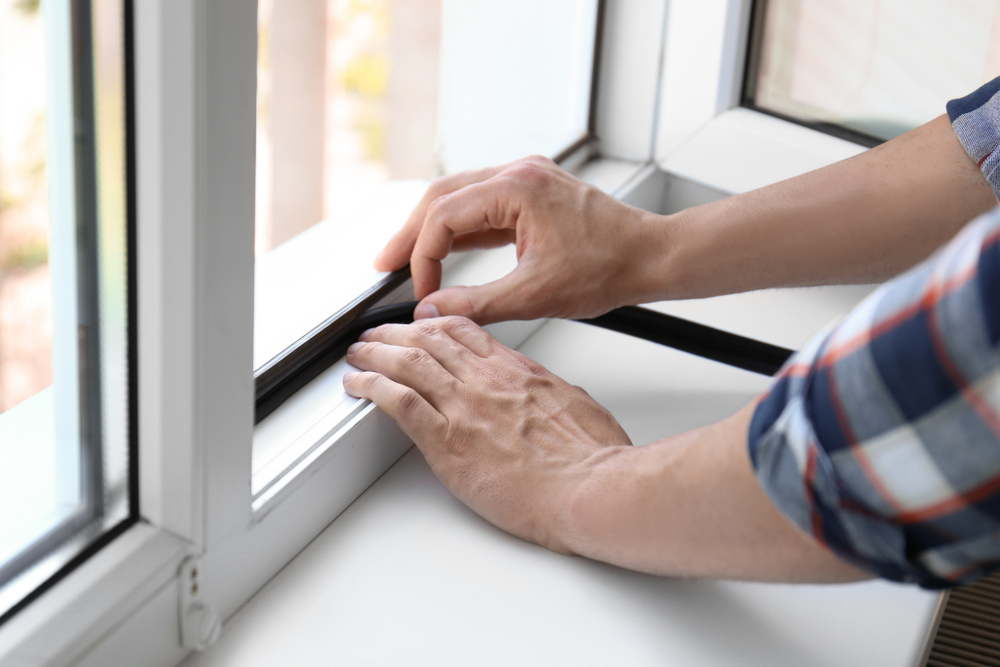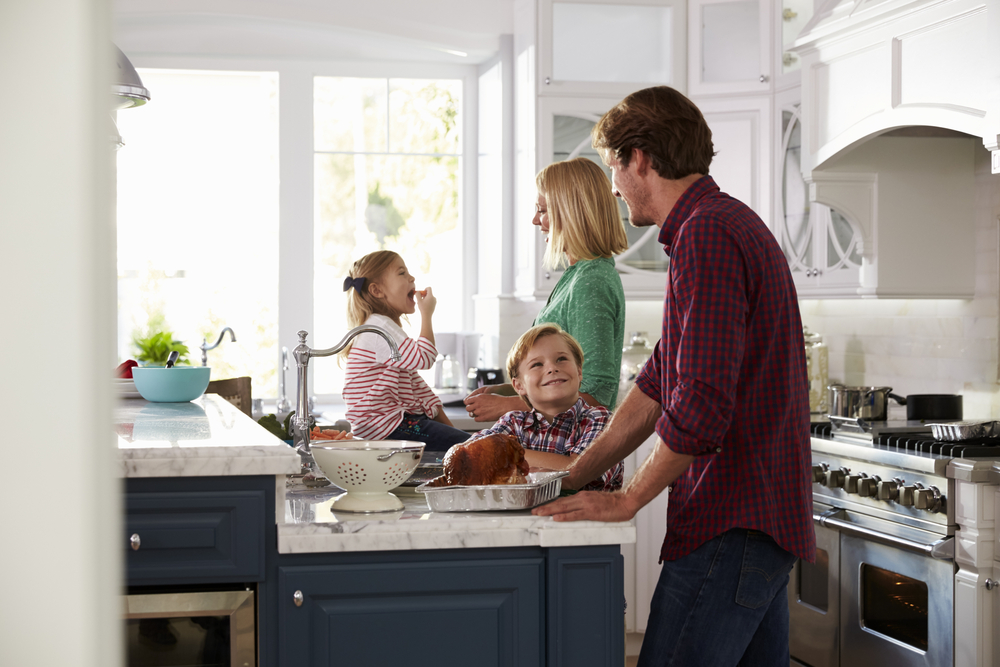How to Conduct a Home Energy Audit

If your home is drafty or if you notice your utility bills skyrocketing after normal energy use, a DIY energy audit may be in order. An energy audit is a type of home inspection that determines where energy is being lost in your property and what upgrades can help. Conducting your own energy audit may not yield the same results as a professional energy audit, but it’s still helpful to identify opportunities to save money and frustration. By completing a thorough and comprehensive energy walkthrough, you can get a better sense of your home’s strengths and weaknesses.
So, what exactly is a home energy audit and how do you perform one? We’ll explore the best ways to successfully complete your own energy audit and how to prioritize energy-efficient upgrades.
What are home energy audits?
Home Energy Audit Checklist
Potential savings of in-home energy audits
What are home energy audits?
You can think of home energy audits like a doctor appropriately diagnosing a patient. A home energy audit investigates the root cause of energy issues rather than just focusing on the “symptoms.” It’s what the US Department of Energy calls a “Whole House Systems Approach” that maximizes your home’s energy efficiency. Your home is an ecosystem with many working parts and variables. Here’s an example of an instance where an energy audit would come in handy: it’s the middle of winter and your home’s internal temperature won’t rise above a certain range despite an energy-efficient HVAC. An intensive home energy audit can help you find the underlying reason why you continually reach for that jacket inside.
You might be tempted to simply add more insulation or pay for another “quick fix” when the root cause of internal frigid temperatures may be gaps in your windowsills or other types of air leaks that allow heat to escape and prevent the house from reaching a comfortable temperature.
The most important result of a home energy audit is the discovery of where your home lacks efficiency and where energy-efficient upgrades can make the biggest difference. After all, the best, most efficient heating system won’t make your home warm and comfortable if there’s a glaring issue such as large gaps in the juncture between your walls and ceilings.
For home-energy audits, you have two options. The first is to hire an energy expert to conduct a professional energy audit. This professional audit can cost anywhere from $200 to $650 depending on variables like your home’s location and size. For a personalized cost of a professional energy audit, you can contact a contractor in your area.
The second option is to complete your own walkthrough using our home energy audit checklist. Use our guide below to discover where you can improve the energy-efficiency of your home and potentially save on your utility bills.
Find Drafts
A draft occurs when your home’s warm, cozy air escapes through holes or leaks in your property and cold air comes in from outside. When this occurs, your heating system becomes less efficient since it’s working harder to maintain a warm temperature. The unfortunate result is higher energy bills.
- Step 1: Look for air leaks - Typically, you’re more likely to find air leaks or draft at the meeting point of walls and ceilings or along your baseboards and flooring edges.
- Check these areas for drafts:
-
Switches, plumbing, and electrical outlets: Check to make sure they are flush against the wall.
-
Basement and attic: If these areas are colder than the rest of your home, drafts are a likely culprit.
-
Fireplace: Is the area surrounding your fireplace cold? Warm air might be getting trapped by the chimney and whisked away outside.
-
Lighting: Even the smallest hole can contribute to an air leak.
-
Windows and doors: Check for warping and lack of weatherstripping.
-
- Check these areas for drafts:
-
Step 2: Seal air leak
-
Plug and seal any drafts: Use the appropriate material to seal up your home. For example, caulking can be used to seal air leaks for plumbing fixtures wall gaps. Weatherstripping should be added to parts of your home that move, such as windows and doors.
-
Pay attention to repair any holes and damage to your foundation or siding.
-

Check ventilation
The amount of ventilation in your home could be outdated. For example, if you have an older home, the builder likely installed the amount of insulation required at the time of construction. However, insulation requirements may have changed as building science has been improved. You may find that you have inadequate or missing insulation in some areas of your home.
- Check the air supply of your HVAC system to ensure your heater isn’t crowded
- Look for soot or visible smoke for evidence of poor drafting
- Consider ceiling and wall insulation
- Check your attic and attic hatch
- Make sure the hatch has weather stripping
- Seal gaps in your attic where warm air is escaping
- Vapor barrier under attic installation
- Check to see that ventilation isn't being blocked by insulation
Investigate your HVAC system
Your HVAC system should be well-maintained and within its manufacturer’s operational lifespan. If it’s not, you may want to consider replacing your HVAC system.
- Check your HVAC system at least once a year.
- Note: HVAC systems typically have a lifespan of 10-15 years. If your system is more than 15 years old, it might be time for a total HVAC replacement.
- Is there dust, soot, or off smells? Constant fan noises? These are all signs of an inefficient HVAC system.
- Check your ductwork for dirt streaks near the seams which could suggest an air leak.

Lights
Lighting accounts for around 10% of your utility bill so consider switching to energy-efficient bulbs if you have older lightbulbs in your home.
- Find and replace regular bulbs for energy-efficient incandescents, LEDs, or CFLs
- Consider adding timers or dimmers to control your light usage.
Appliances
Besides using your appliances during off-peak hours, the type and age of your appliances also matter when it comes to energy-efficiency. Here are a few considerations to make while checking your appliances and electrical devices:
- Check for appliances that are always plugged in and consider unplugging them when not in use
- Check the default settings of your appliances and which ones you can change to use less energy
- Consider investing in new appliances if yours are contributing to energy losses
Questions to ask yourself after your audit:
If your energy audit turned up less-than-ideal results, you may be wondering energy-efficient home improvements. Before you get into the repair phase of your energy improvements, ask yourself the questions below.
-
What is your average utility bill?
-
What areas of your home have the most inefficient energy use?
-
How long will it potentially take to offset energy-efficient investments with utility savings?
-
Do the energy-efficient versions of products provide you with additional benefits like comfort?
-
Are you planning on staying in your current home long-term?
-
Are these repairs and upgrades you can do yourself or do they require a professional?
-
What is your overall budget for home repairs? What financing options are available to you?
-
Will the repairs potentially increase your home’s market value?
-
How much time do you have to dedicate to repairs and maintenance?
Potential savings identified by in-home energy audits
The savings from an energy audit depends on many variables. For example, if you have a wildly inefficient home that can be improved with simple cost-efficient upgrades, you’ll immediately feel the benefit of those savings. But if the upgrades you need to make are costly, the savings may still be a big number but they will accrue over the lifetime of those upgrades rather than immediately. Essentially, you’ll have to consider the long term savings of any improvement you decide to make versus the upfront cost. Some energy-efficient improvements may affect energy savings more than others and depend on the cost and impact of the utility.
Upgrades you make as a result of an energy audit can save you between 5%-30% of your total monthly energy bill. If you’re looking to finance major home improvements that will help you achieve overall energy efficiency, you may want to consider PACE financing. But, what is PACE financing?
PACE is a financing option based on your home equity and repaid with your property taxes, offering low-interest rates and up to 30-year terms. PACE financing is available for a wide variety of home improvement projects including roofing, storm protection upgrades, solar power installations, energy-efficient windows, and doors.
Takeaways: home efficiency for today and tomorrow
As the costs of energy continue to rise, you can take steps to improve your home’s energy efficiency. With an energy audit, you can empower yourself with the information you need to maximize energy savings. If you’re interested in lowering your utility bill and enjoying a more comfortable home, get prequalified for PACE financing through Ygrene and begin your home improvement journey today.




